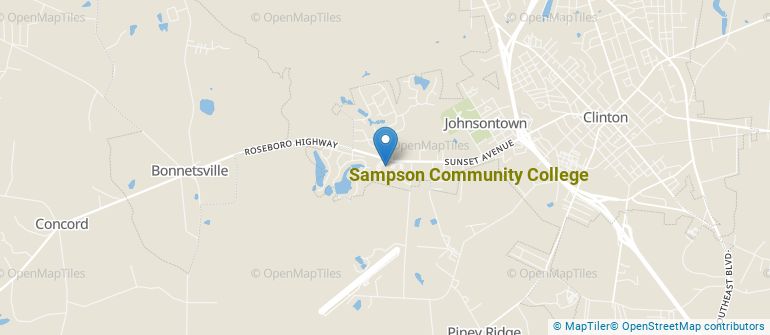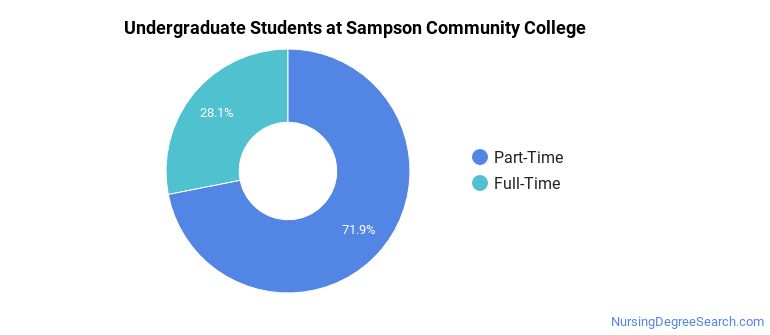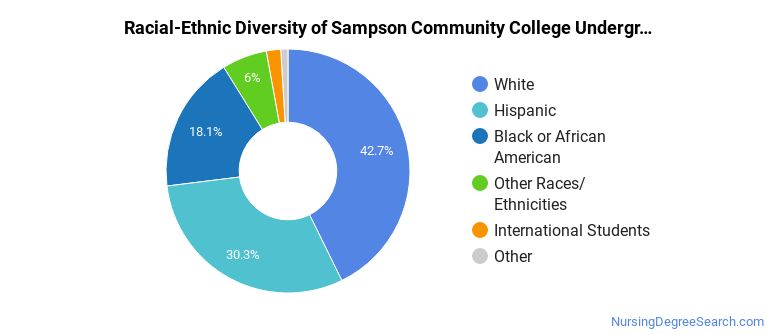Sampson Community College Nursing Programs
Sampson Community College is a public institution situated in Clinton, North Carolina. Clinton is a good match for students who enjoy small-town life.
Where Is Sampson Community College?

Contact details for Sampson Community College are given below.
| Contact Details | |
|---|---|
| Address: | Highway 24 West, Clinton, NC 28328-0318 |
| Phone: | 910-592-8081 |
| Website: | www.sampsoncc.edu |
How Do I Get Into Sampson Community College?
You can apply to Sampson Community College online at: www1.cfnc.org/applications/nc_community_college/apply.html?application_id=1524
Can I Afford Sampson Community College?
Sampson Community College Undergraduate Student Diversity

Gender Diversity
Of the 419 full-time undergraduates at Sampson Community College, 34% are male and 66% are female.

Racial-Ethnic Diversity
The racial-ethnic breakdown of Sampson Community College students is as follows.

| Race/Ethnicity | Number of Grads |
|---|---|
| Asian | 4 |
| Black or African American | 76 |
| Hispanic or Latino | 127 |
| White | 179 |
| International Students | 8 |
| Other Races/Ethnicities | 25 |
Sampson Community College Nursing Concentrations
The table below shows the number of awards for each concentration.
| Major | Basic Certificate | Associate’s | Undergraduate Certificate | TOTAL |
|---|---|---|---|---|
| Registered Nursing | 0 | 35 | 0 | 35 |
| Licensed Practical/Vocational Nurse Training | 0 | 0 | 18 | 18 |
| Nursing Assistant/Aide and Patient Care Assistant/Aide | 6 | 0 | 1 | 7 |
| TOTAL | 6 | 35 | 19 | 60 |
References
*The racial-ethnic minorities count is calculated by taking the total number of students and subtracting white students, international students, and students whose race/ethnicity was unknown. This number is then divided by the total number of students at the school to obtain the racial-ethnic minorities percentage.
More about our data sources and methodologies.
